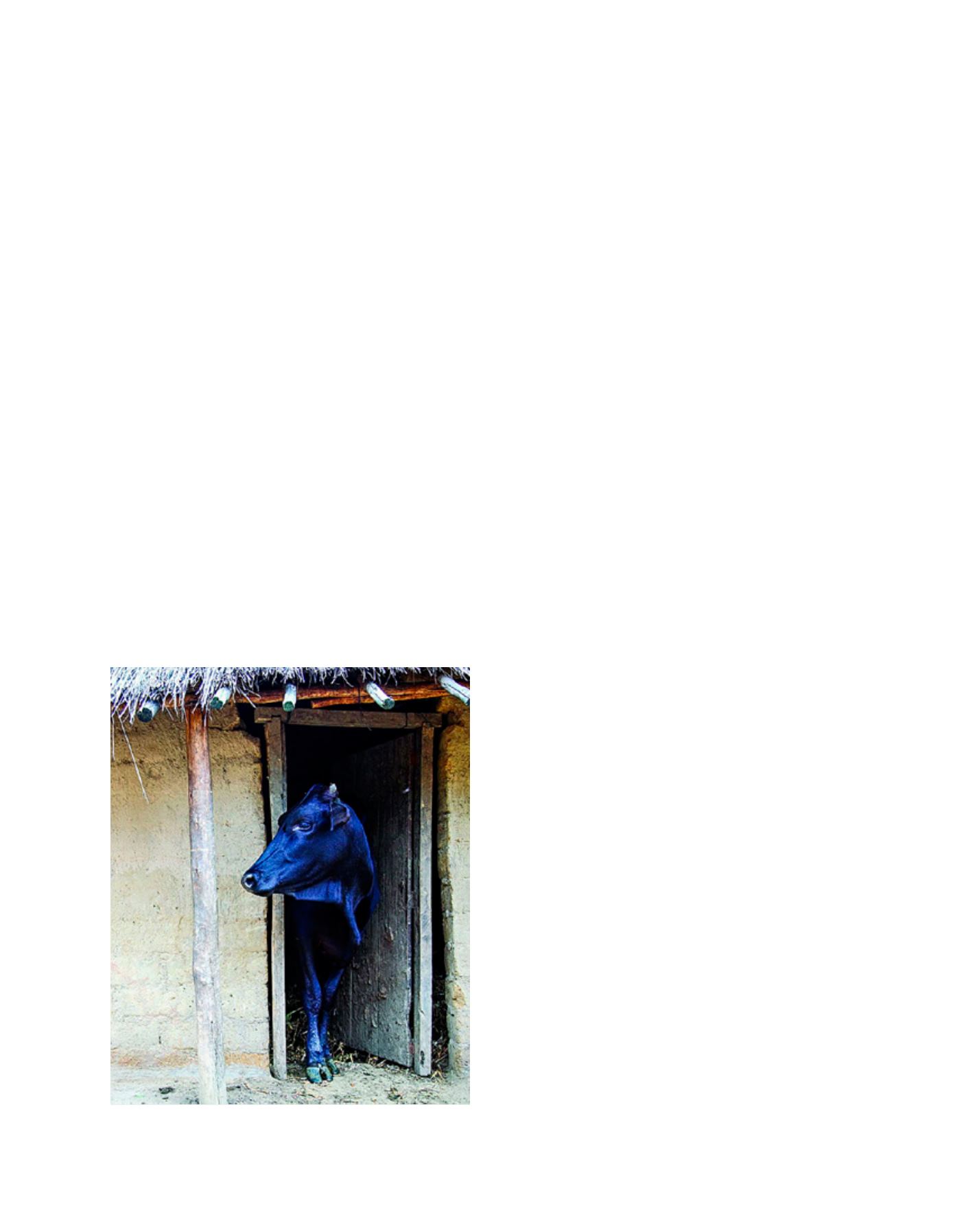

[
] 121
settings. Research has shown little evidence of economies
of scale at play in dairy production in Asia and Africa, for
example, particularly where the opportunity costs of labour
are low and incentives for mechanization limited.
4
Small
family-run pig enterprises in Viet Nam were also shown to
operate with similar or lower unit costs than larger enter-
prises.
5
The family nature of livestock enterprises is central
to this competiveness.
As a result, small family farms produce 70 per cent of
the milk in India, now the world’s largest milk producing
country; more than 90 per cent of meat from sheep, goats
and chickens; and 70 per cent of beef. In Viet Nam, where
some agricultural subsectors are intensifying rapidly, small
farmers still produce 90 per cent of the supply of pork, the
most popular and important meat product in that country.
These small farm shares are expected to decline in future
with rural-urban migration and changing technologies, but
the opportunities for tens of millions of smallholder live-
stock farmers across several continents to improve their
lives and livelihoods through livestock will continue for
decades to come.
Household livelihoods
While clearly important for family livestock farms in the aggre-
gate, livestock are also economically important at individual
household level. As one measure of that importance, nearly
1 billion people living on US$2 a day or less in South Asia
and sub-Saharan Africa keep livestock. More than 80 per cent
of poor Africans keep livestock, and 40-66 per cent of poor
people in India and Bangladesh keep livestock.
6
In many rural
settings, livestock production comprises the most important
part of individual household incomes and livelihoods.
Also seldom recognized is that keeping livestock often
does not require land owning or even land-use rights.
Intensive specialized livestock production can be carried
out at the homestead with feed bought, exchanged or gath-
ered from other sources. Analysis in Kenya found that the
size of land holdings is not associated with a family’s ability
to keep dairy cows.
7
In India, where rural and urban land-
lessness is an ongoing problem, the number of landless
dairy producers has been increasing.
A study of 92 cases from the developing world found
that livestock contributed on average 33 per cent of income
from all sources on mixed crop-livestock farms, with higher
proportions associated with market-oriented dairy and
poultry production.
8
The importance of livestock tends to
increase in drylands and other regions where growing crops
is nearly impossible for climatic reasons and livestock are
the only practical means of harvesting the benefits of scarce
moisture. In these largely non-arable lands, the study
found average livestock incomes from pastoral production
comprises 55 per cent of total household incomes.
The shares of household income from livestock are not
only typically large but also growing in many cases. While
the share of income from cropping remained stable or even
declined, the share from livestock grew in just six years
by 75 per cent in Ghana and by 110 per cent in Viet Nam
(1992-1998) and by 290 per cent in Panama (1997-2003).
9
This is partly because as smallholder households transi-
tion from subsistence to market-oriented agriculture, they
prefer marketing high-value meat, milk and eggs to selling
crops, which are often of lower value. Livestock thus plays
an increasingly large role in the market income of small-
holder households as farms shift to market-orientation and
away from subsistence.
An important aspect of household incomes from live-
stock is that the daily surplus of milk and eggs is a ready
(and rare) source of regular cash income in poor rural
environments. Livestock also offers unique economic and
livelihood benefits. As an inflation-proof means of accu-
mulating assets, livestock serve as insurance instruments
for maintaining funds for medical and other emergencies
and as a means of saving planned expenditures such as
school fees or small business investments. These are criti-
cal matters in resource-poor communities, where formal
insurance schemes and savings mechanisms are often
nonexistent. Here, medical emergencies can produce
life-long poverty traps. Even small stock such as goats or
poultry, which are often in the control of women, are used
for lumpy expenditures such as utility bills.
Finally, in many communities livestock keeping improves
a family’s social capital, improving access to other commu-
nity services and functions. Remarkably, estimates of these
‘non-market’ benefits of livestock keeping can amount to
an additional 40 per cent on top of cash profits.
10
Such
non-market benefits are generally not available to large
commercial producers, for whom livestock assets are sunk
costs rather than assets accumulated through low-cost
labour and local feed resources.
Smallholder family farms still dominate livestock production – especially with
ruminant animals – in most developing countries
Image: ILRI
D
eep
R
oots
















